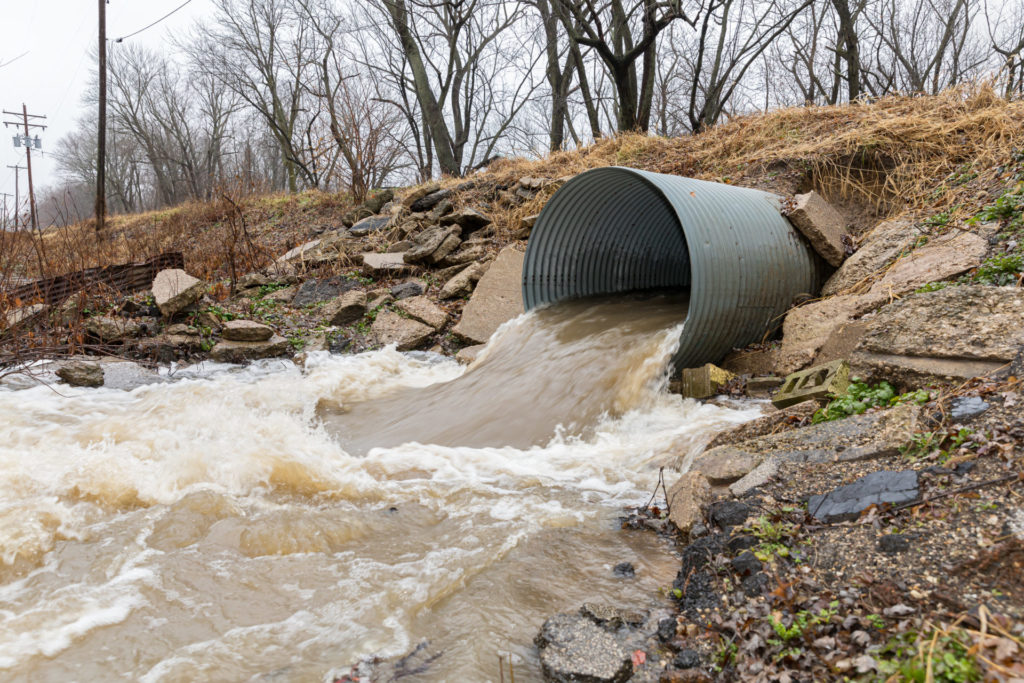Your Culverts Are Failing (Or Going To Fail). Here’s How To Fix Them.

Your culverts are failing, or they’re going to. Here’s how to fix them.
We’ll be blunt here: Your city or county’s stormwater culverts are likely failing. If they’re not, they’re going to. Want to save yourself some time right now? Sprayroq’s trenchless, structural lining systems can fix this for you at a fraction of the cost, time, and hassle. Don’t believe us? Read on…
If you work as a municipal/city manager or engineer, you know this. If you work with a city, county, or state road department or department of transportation, you know this.
It’s the endless cycle whack-a-mole approach often taken with stormwater runoff and sediment. Culverts and drainage were designed when the road was built (often insufficiently). The corrugated steel in the 40-60-year-old pipes corrodes but inconsistently. You’re left with a conundrum: expensive cutout-and-replace options or band-aid style fixes. Budget constraints, road closure issues, and long construction times are all significant barriers. Heck, half the time, the culvert is in excellent condition, save for a few spots where corrosion is starting to rear its ugly head.
It doesn’t have to be this way.
WHAT’S REALLY CAUSING THE ISSUE
Let’s take a look at some of the core issues. Corrugated steel sheet culverts are some of the worst offenders. Stormwater runoff sits stagnant in the low points of the corrugation (and seems to love the sheet plate joints and bold heads the most). Sediment piles up in the flow lines as well, holding moisture.
It’s a recipe for corrosion, rust, and failure.
It only accelerates the issue if you’re in an area that uses road salt or brine (necessary to combat the harsh winter road conditions).
IS IT THAT BIG OF A DEAL?
You already know the answer, but maybe your boss doesn’t.
Yes.
It’s a huge deal.
Here’s why: those minor areas of corrosion allow storm runoff, salt, and sediment to erode the surrounding soil. The erosion reduces road compaction and support, leading to sinkholes, potholes, and general mayhem with the road surface. We don’t need to tell you how expensive those repairs are.
WHAT ARE THE OPTIONS?
The traditional solutions get pricey. Just a 30-foot section of culvert can run upwards of $200,000, with eight weeks of traffic disruption to open, cut, and replace.
Sure, there are other options. Felt liners cured-in-place pipe (CIPP), fiberglass CIPP, spray applied epoxies. However, CIPP solutions are very susceptible to the same issues as the original material. They also suffer problems with shrinkage and cracking.
Depending on your structural needs, you’d be much better off considering a solution like SprayShield Green 2® or Spraywall®.
Sprayshield Green 2® is a semi-rigid bio-based polyurethane. It’s excellent in applications that experience light movement or flex (like a culvert under a road, for instance)—the material gels in about 8 seconds. It cures enough to accept flow again within 30 minutes. By the six-hour mark, the material is fully cured. Sprayshield Green 2® is an excellent corrosion barrier and can be applied at a fraction of the cost of traditional methods.
Suppose you require a structural lining. In that case, Spraywall® continues to be the gold standard in the industry, providing unrivaled structural integrity at a fraction of the cost and time of competing solutions. Consider this application in East Goshen Township, PA, where the bid was 1/3 the cost of the competition and required only a single day of installation with no detours or road closures.

